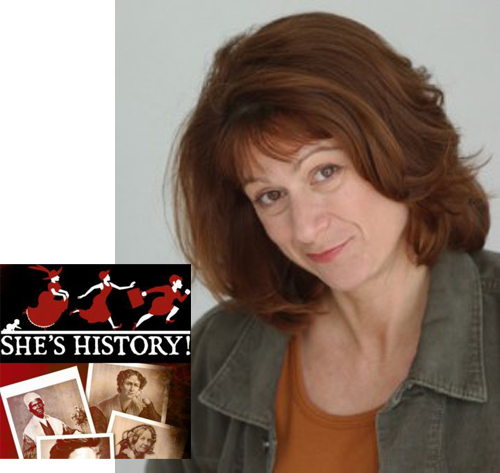
By Stacey Gualandi/March 9, 2016
TWITTER: @sheshistoryamy
Amy Simon calls herself a cultural “her”storian. This writer-actress celebrates everyone from Betsy Ross to Hillary Clinton in her latest solo play which is anything but a one-woman show.
Another of Simon’s works, Cheerios in my Underwear, holds the record for the longest-running solo play in Los Angeles, CA. Now she’s on track to break that seven-year record.
She once asked the question, “Why do we know more about Kim Kardashian than Eleanor Roosevelt?”
So she came up with another solution: She’s History: The Most Dangerous Women in America Then and Now. From Bella Abzug to Susan B. Anthony to Lilly Ledbetter (whom I’ve interviewed on The Women’s Eye Radio Show!), Amy salutes American women who make and made history.
In honor of Women’s History Month, Simon is performing on March 13th in Hollywood, CA. She says many of us share a collective guilt of not knowing who these historical women are, and feeling like we should. But she says that’s her job. “I’m happy to be the one to tell you; that’s why I do what I do,” says Simon. And there are plenty of women to go around.
Simon shared her story on TWE Radio and talked about how she came to portray so many fabulous females…
EYE: Why are you honoring female America?
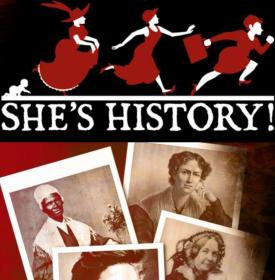
AMY: What really inspired me was motherhood. I have two daughters. I was raised on Gloria Steinem, Helen Reddy and Marlo Thomas. My mom was a feminist – she didn’t call herself a feminist, she just was one. She invested in the First Women’s Bank of New York. She was a role model to me because she was really unhappy in her role as mother.
She was born in 1927 and I think she was born in the wrong time…. she was not happy with the lack of choices. I think that simmered in me for a lot of my young life.
We went through the women’s movement together. I was 14 in 1970 and she had been a mother for awhile and then was out burning her bra. That influenced me.
EYE: Did you want to be a stay-at-home mom when you had your children?
AMY: I was 36 when I had my first daughter. It was a choice. I was ready to stay home and my husband and I decided to have a very traditional arrangement. I was very domestic was ready to stay home, to do the important work of raising children.
Like a lot of women my age, when we became moms, it was very shocking. One morning I went from a well-paid, full-time independent career woman to an unpaid, full-time, sleep deprived, hormonally-challenged, care-giving, housecleaning, nurture shocked stay-at-home mom one morning.
Then, at 10 years old, my daughter comes home from school one day and says she wants to do her women’s history report on Cher…or Janet Jackson.
EYE: What was your reaction?
AMY: I fainted and then asked her, “Why?” And she said, “Because you get to dress up like them.”
EYE: They are two talented accomplished women in their own right but…?
AMY: But they don’t belong in a women’s history poster next to Eleanor Roosevelt, or Bella Abzug, or the 50 other women I talk about in my play! And what really got me is that she thought that she could include them.
“At that point, I was already simmering that we only get one women’s history month and that this subject is not even being taught in the schools!”
EYE: Why are there are so many women in history that we don’t know?
AMY: One of my main goals is to talk about the women who nobody knows. I’m happy to talk about Betsy Ross and Abigail Adams, those are the women we know, but nobody’s heard of the rest of the women in my show.
Even historians don’t know them either, but they made amazing contributions, and, in many respects, made our lives better today. To answer, “Why don’t we know them?” that’s the one-million-dollar question.
We have a patriarchal society. From all the research I’ve done, women were always considered intellectually inferior. For example, there were medical drawings by doctors (I use many of these visuals in my show) who said that women’s brains were really small. A woman’s sphere was to be home taking care of the home and children.
EYE: Is there a common theme with the women in your play?
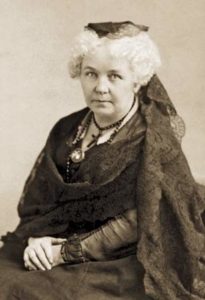
AMY: They were not supposed to be out in the business world. In the 1700 and 1800s, women had so few rights they could not even own their own bodies or own their own property. One woman in my show that I am completely obsessed with is Elizabeth Cady Stanton.
She worked with a number of other women, including Ernestine Rose, on getting the Women’s Property Act passed. That didn’t happen until 1848. Here we are in the 21st century and we’re still dealing with a lot of the same issues that Susan B. Anthony dealt with!
EYE: So you’ll have to keep doing this until everyone knows who these women are?
AMY: I could do a play about each one of the women! What also inspired the play was when I got divorced and had to deal with the family legal system, which is completely dysfunctional. A lot of times, I say I do this play because I got screwed; I got mad; I got busy.
Most of my show deals with injustice and celebrates the women who fought injustice to make the world better. They gave me courage and inspiration.
EYE: She’s History first went on stage in 2010. Which female in history really surprised you?
AMY: I really had to educate myself first. In the library, I picked up the Women’s Progress in America book. I discovered Victoria Woodhull while Hillary Clinton was running against Barack Obama. She became America’s first female presidential candidate when she was nominated by the Equal Rights Party!
“She ran in 1872 and asked Frederick Douglass, the famous abolitionist, to be her running mate. She really started me down this path. So Hillary was not the first to run for president!”
EYE: Who is your audience?
AMY: It’s wide-ranging. I love performing for older women; they understand the struggle. It would never occur to my two daughters, who are now 19 and 23, that they couldn’t do something because they’re female. And that’s where the great strides have been made. It’s the women before us like my mom who were trapped.
EYE: I’m looking at the list of woman you profile: Hillary Clinton, Gloria Steinem, Katie Couric — all the way back to Sally Hemings, Mary Shelley, Harriet Tubman and Annie Oakley!
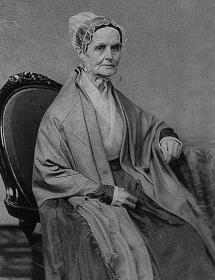
AMY: Yes, and I do a whole thing on the Quakers. They were the first group to ban slavery, but more importantly, they educated their women. They produced Lucretia Mott, the first woman in America to preach. Also, suffragist Alice Paul.
She basically wrote the Equal Rights Amendment. She pretty much got the 19th Amendment passed. Her story is fantastic.
EYE: What is great about your play is that there is always a point in history that your play relates to. What have you learned while doing She’s History?
AMY: It’s really about tyranny and oppression. When people come to power, they want to stay in power. That’s what I have discovered in my play. I do not do any man bashing — there are lots of men who helped women.
EYE: Where do you go from here?
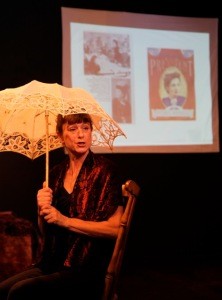
AMY: I’ve started performing in the schools. Every time I perform there, I get fantastic results. Young girls say, “I didn’t know that!” I talk mostly about American women who have made our lives better.
Look at what’s going on in the Mid East. When these little girls come up to me and say, “I didn’t know these women couldn’t drive,” or “Why does she have to cover her face?” they need to know it hasn’t always been this way.
EYE: Do you want to add more women to your show that you haven’t yet?
AMY: Oh, everyday!
EYE: It’s good to know that there is a never-ending supply of gutsy women to choose from! Thank you, Amy! For more information on where to see Amy’s one-women show, click on her website www.sheshistory.com.
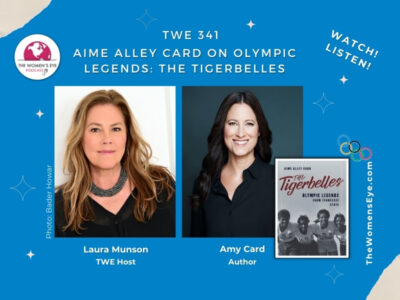

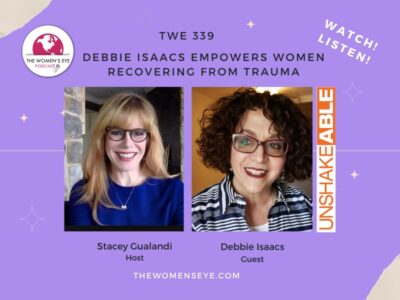
Wonderful interview. I am so happy Amy Simon is a guiding voice for the younger generation of girls. There are so very many women, including those in their fifties, that have forgotten how difficult the fight for women’s rights were, and still are. This article is a reminder of how we need to honor their brave, hard battle.
Thank you, Stacy, for a great interview and subject.